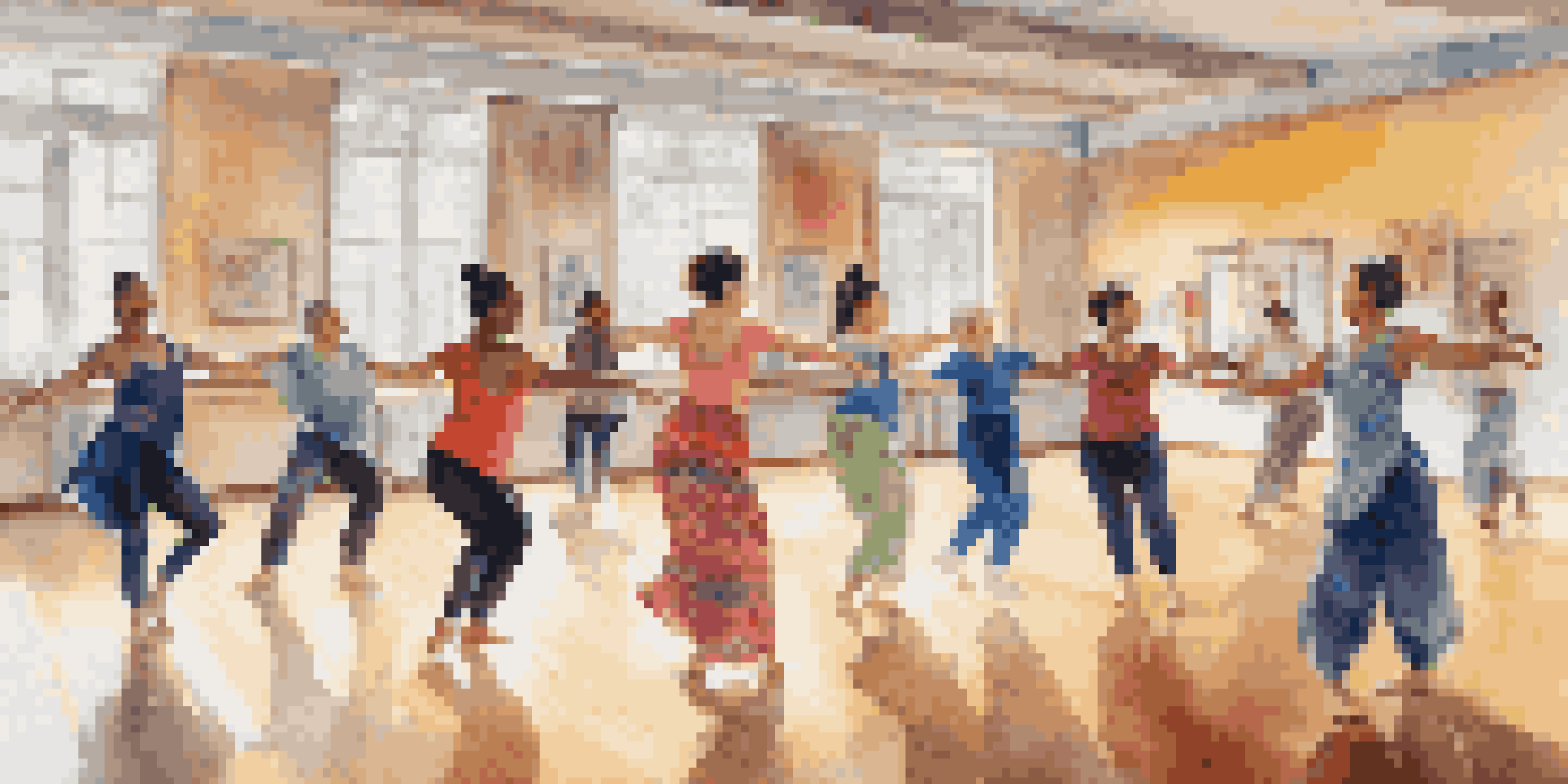Promoting Cultural Diversity within Adaptive Dance

Understanding Adaptive Dance and Its Importance
Adaptive dance refers to dance programs tailored for individuals with disabilities, allowing them to express themselves creatively. This form of dance encourages movement, self-confidence, and social interaction, offering a safe space for personal growth. By incorporating adaptive techniques, instructors can cater to various abilities and ensure that everyone feels included and valued in the dance community.
Cultural Diversity: A Key Component of Adaptive Dance
Cultural diversity enriches the adaptive dance experience by introducing a variety of dance styles, rhythms, and traditions. When dancers from different cultural backgrounds come together, they share unique perspectives and experiences that enhance the overall learning environment. Celebrating diverse cultures not only fosters creativity but also builds empathy and understanding among participants.
Adaptive Dance Promotes Inclusion
Adaptive dance programs provide a creative outlet for individuals with disabilities, fostering self-confidence and social interaction.
Creating Inclusive Dance Environments
To promote cultural diversity in adaptive dance, creating an inclusive environment is crucial. This involves recognizing and valuing each dancer's unique cultural heritage while also providing access to diverse styles of dance. By incorporating cultural elements into classes, such as music, costumes, and storytelling, instructors can create a richer, more engaging experience for everyone involved.
Engaging Communities through Collaborative Events
Organizing events that celebrate cultural diversity within adaptive dance can foster community engagement. Dance showcases, multicultural festivals, and workshops can bring together dancers from various backgrounds, allowing them to share their talents and learn from each other. These events not only strengthen community ties but also raise awareness about the importance of inclusion and representation in the arts.
Cultural Diversity Enriches Dance
Incorporating diverse cultural elements into adaptive dance enhances creativity and builds empathy among participants.
The Role of Educators in Promoting Diversity
Educators play a crucial role in fostering cultural diversity in adaptive dance programs. They can introduce diverse dance forms while being mindful of each dancer's abilities and cultural significance. By continuously educating themselves on different cultures and their dance traditions, instructors can create a more enriching and respectful learning environment for all participants.
Building Relationships through Dance
Dance has an incredible power to connect people across different cultures and backgrounds. Through shared movement and expression, dancers can build relationships that transcend barriers. These connections foster a sense of belonging and community, demonstrating how adaptive dance can serve as a bridge between diverse individuals.
Community Events Foster Engagement
Organizing collaborative events centered on cultural diversity in adaptive dance strengthens community ties and raises awareness.
Highlighting Success Stories in Adaptive Dance
Celebrating success stories in adaptive dance can inspire others to embrace cultural diversity. Many dancers have overcome challenges and excelled in their craft, often influencing their communities positively. Sharing these stories not only highlights the impact of adaptive dance but also encourages new participants to join and explore their cultural identities.
Looking Ahead: The Future of Cultural Diversity in Dance
As we look to the future, promoting cultural diversity in adaptive dance will be essential for its growth and sustainability. By advocating for inclusive practices and championing diverse voices, the adaptive dance community can continue to thrive. Ultimately, embracing cultural diversity will enrich the art form, making it accessible and relatable to a broader audience.